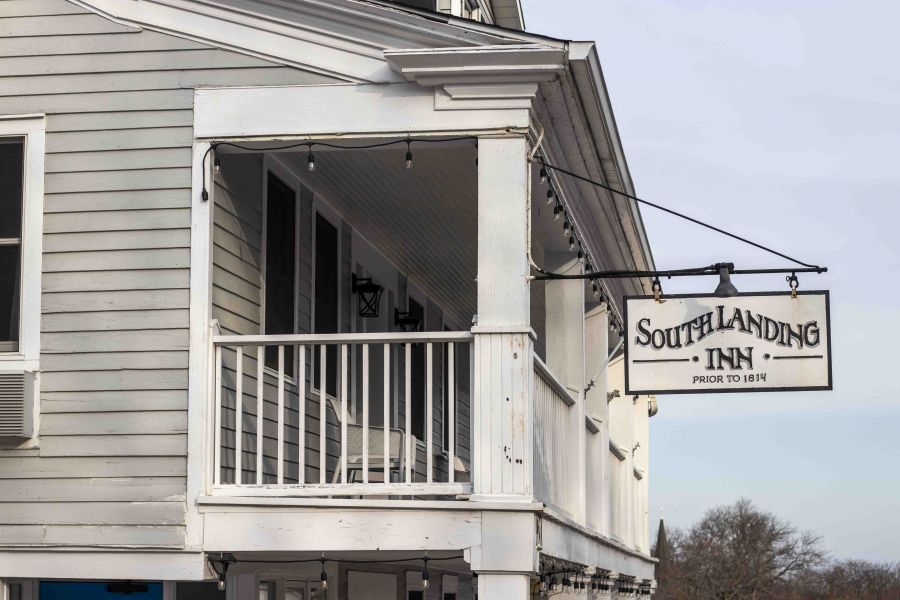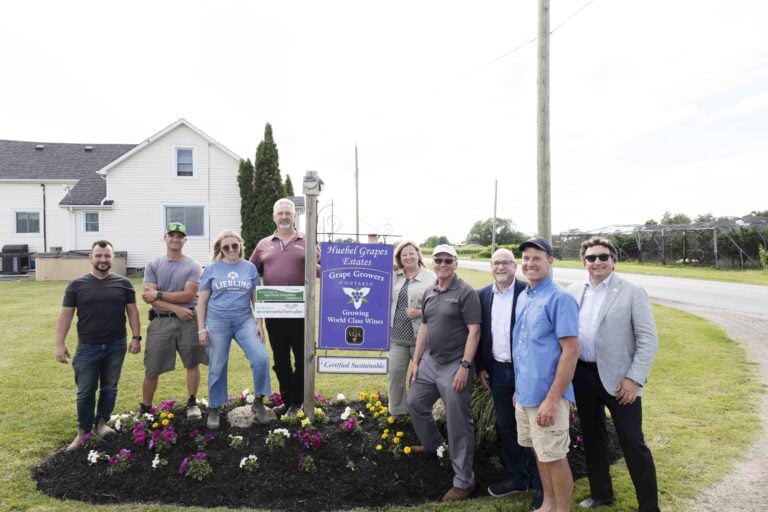Linda Fritz
Exclusive/The Lake Report
South Landing was one of the earliest resting places for travellers in the village of Queenston. There is, however, some debate about when it was built and when it actually became an inn.
Over its lifetime the inn’s names have included Prospect House, Frontier House and River Landing. The name South Landing was implemented in the late 1940s. There was a West Landing and an East Landing on the U.S. side of the Niagara River.
The land was originally owned by businessman Thomas Dickson, a cousin of Alexander Hamilton. He supposedly built a house on the lot. Dickson’s known residence in Queenston is located on Queenston Street, very close to the site of South Landing. That building was heavily damaged during the War of 1812, but was later rebuilt. That house and its barn can still be seen today.
Whether South Landing was built before the War of 1812, and if it survived the damage caused by American troops, is also cause for speculation. There is an intriguing statement in the diary of John Le Couteur that may indeed refer to an inn run by Dickson.
Below is an excerpt from “Merry Hearts Make Light Days: The War of 1812 Journal of Lieutenant John Le Couteur, 104th Foot,” edited by Donald E. Graves and published by Carleton University Press in 1993.
24 September 1814
“Saturday. Got to Queenston. A lovely day, but shining dismally on that lovely village – It will be long before it is restored to its peaceable attractions. It is melancholy to see such wanton destruction as the broom of war has made in it, it is a palace of desolation. We are in quiet possession of Colonel Dickson’s fine large house, with the 89th (Regiment) light bobs, it being the only one with windows left in it. As the big wigs were sure to take the best rooms, I mounted at once to the garret where the Yankees had broken nothing, the doors & other windows being safe & the room snug. At night I turned down, not in, all standing, with my blankets above & bearskin below me.”
Did Le Couteur describe the inn or Dickson’s Queenston Street home? One person who read the diary suggests that the fact the house in question was three storeys, and that there were “best rooms” for the big wigs means it was indeed the inn. This reader also points out that Le Couteur states there was more than one room in the garret by the use of the word “doors.” All of this is pure speculation.
This commentator also refers to the Edward Walsh painting of Queenston Upper Canada (ca. 1803, 1807) as evidence of a large house with a two-storey veranda facing the river. He believes that the house’s location and veranda point to it being South Landing.
Jean Huggins, in an essay about South Landing, states that there is a water colour dated 1831, by James Pattison Cockburn showing a building that could be South Landing.
The present building is generally believed to date from 1827. Dickson sold the property in 1841.
By 1883, it was owned by the Wadsworth family. According to the General Directory and Gazeteer of Lincoln and Welland County in 1856, Daniel Wadsworth was the proprietor of the Suspension Bridge Hotel. A second Wadsworth, John, ran the Traveller’s Home.
By the turn of the 20th century, yet another Wadsworth, this time James, was in charge. Rum running had been going on well before Prohibition in the United States, and James was best known as a bootlegger. He kept his liquor supply under the very high steps of the building. James Wadsworth was known to have smuggled people as well, at $50 a head.
Miss Margaret Dressell bought the building in 1910. She named it the Riverview Inn, although villagers continued to refer to it as the Wadsworth House.
Many of those injured in the Niagara Falls Park and River railway accident on July 7, 1915, were cared for by Miss Dressell at the inn. The railway car, which was overcrowded by picnickers who were trying to escape a rainstorm on Queenston Heights, derailed as it descended toward the boat dock in the village.
The South Landing building we see today originally consisted of eight rooms, with one bathroom on each floor. People would have tea on the veranda in the 1920s. Full-course meals cost between 25 and 35 cents as late as 1949.
In 1953, a second female proprietor came on the scene. Rie Bannister, a talented weaver, opened the South Landing Craft Centre. A true entrepreneur, she wanted to run a weaving co-operative and school.
The rooms in the inn were intended for use by guest instructors. Although Mrs. Bannister provided them with room and board, she could not afford to pay them. As a result, few of the invited lecturers accepted the invitation to spend time in the village.
Undaunted, Mrs. Bannister undertook the teaching work herself, and opened the inn to students who would stay from a few days to a week. Hundreds of people from all parts of Canada and the United States made an annual trip to the South Landing Craft Centre to buy supplies and take refresher courses with her.
According to one commentator, they came both by car and by the busload! Many local people learned to weave at the craft centre, and remember Mrs. Bannister fondly.
In 1981, the old South Landing building became the property of Tony and Kathy Szabo, who owned the motel across the road. They modernized the old inn, and continued to welcome guests.
South Landing Inn recently changed hands again and another upgrading has taken place.
Today, there are visitors who come to Niagara on the Bike Train from Toronto and stay at the inn. Those guests who come by car can leave them behind and rent bikes that are conveniently located in the car park. They can then make a leisurely excursion to Queenston Heights or the wineries located along the Niagara River Parkway.
A very pleasant way to spend a holiday..
More Niagara’s History Unveiled articles about the past of Niagara-on-the-Lake are available at:
www.niagaranow.com











